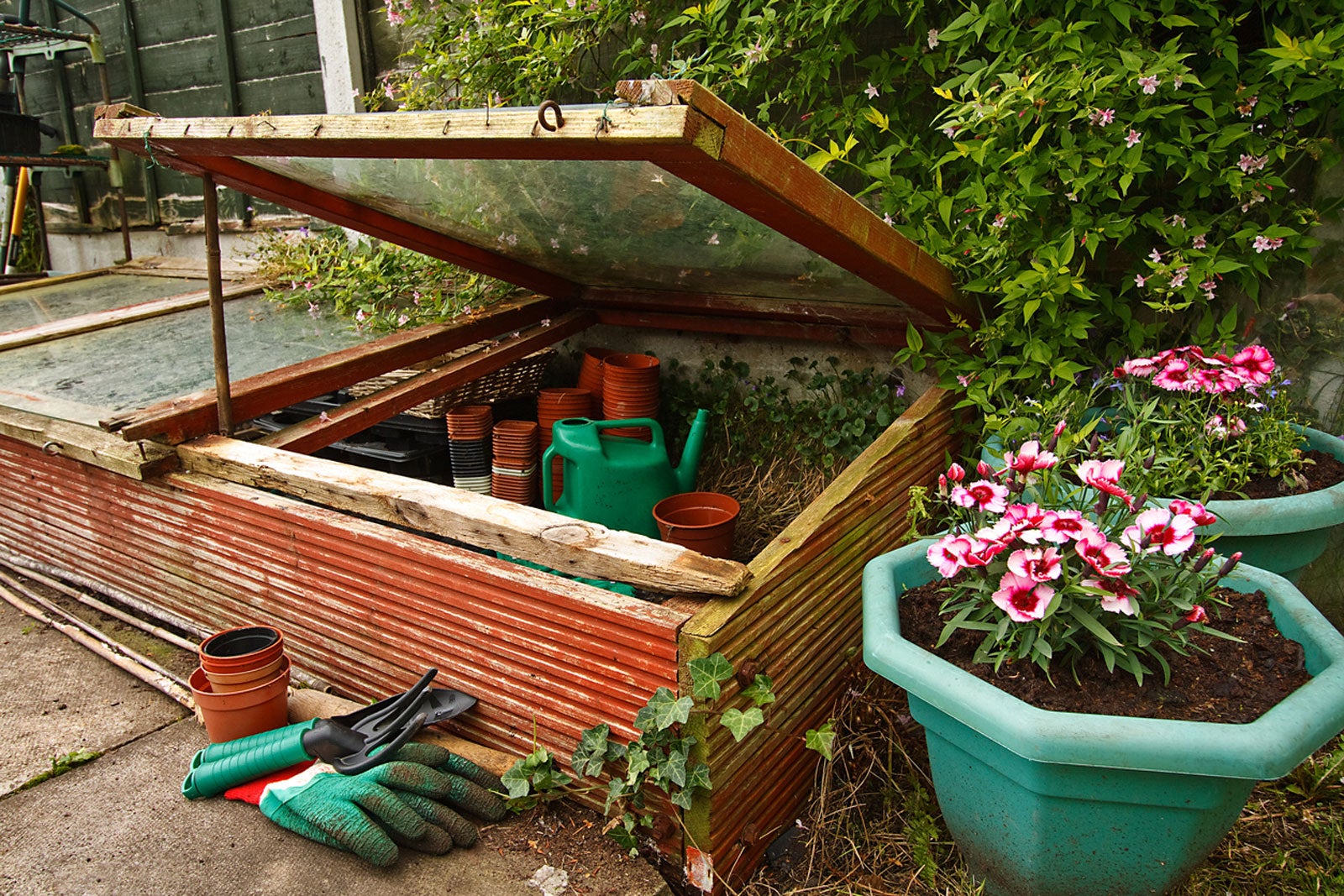What Is A Hot Bed – Tips For Gardening In A Hot Box


Gardening in a hot box or hot bed has many benefits. It allows you to extend your growing season, provides a way to tart warm climate vegetables earlier, gives a warm place to root cuttings, and allows you to do much of what you can do in a greenhouse in a smaller, more simple, cost-effective space. Keep reading for some garden hot box plans and ideas.
What is a Hot Bed?
A hot bed, also known as a hot box, is a heated cold frame. A cold frame is a plant bed that is protected from the environment to keep it a little bit warmer than outside the frame. Essentially, a hot box is a miniature greenhouse.
The main reason to use a hot box is to extend the growing season. There are several ways to do this, and many other reasons to look into garden hot box plans and to build your own. For instance, you can start seeds outside rather than inside, when it’s still too cold to start them directly in the ground.
You can also start warm-weather vegetables, such as melons and tomatoes, earlier than you would be able to otherwise. Grow your vegetables longer into the fall or winter for an extended harvest.
With root cuttings from woody plants, you can use the warm soil to stimulate root growth more quickly. A hot box also allows for overwintering semi-hardy plants and hardening off transplants.
How to Build a Garden Hot Box
A hot bed or box is a simple structure and, with basic tools and DIY abilities, you should be able to make one. Look for garden hot box designs online to guide your construction or just build a very simple structure with four planks of wood or concrete blocks on each side. Add a hinged lid with clear glass or plastic.
The above describes a simple cold frame. What makes a hot box a little more complicated is the addition of a heating element. The simplest way to heat a bed is to put a layer of manure under the soil. As it decomposes it will warm the soil.
Gardening tips, videos, info and more delivered right to your inbox!
Sign up for the Gardening Know How newsletter today and receive a free copy of our e-book "How to Grow Delicious Tomatoes".
Without access to enough manure, the next easiest way to heat a bed is to use electric heating cables. To use cables, first check with your local extension office to determine how many watts per square foot you need to provide heat in your hot box climate.
When using heating cables in a hot box, it’s best to create an insulated bottom for the bed. Over this, place a lining of landscape fabric. Use a staple gun to fasten the cable to the fabric. Lay it out in a spiral with about three inches (7.5 cm.) between cables. Use about two feet (61 cm.) of cable for every square foot (0.1 square meters) in the box. Cover the cables with sand and then soil.
Make sure the cables you choose have a thermostat so you can control the temperature. Carefully bury the cable extending from the box to the outlet. Otherwise, it can be damaged by yardwork or lawn mowing.

Mary Ellen Ellis has been gardening for over 20 years. With degrees in Chemistry and Biology, Mary Ellen's specialties are flowers, native plants, and herbs.
-
 Looking For Plants To Give You The Soft And Fuzzies? Try These 5 Fuzzy Leaf Plant Options
Looking For Plants To Give You The Soft And Fuzzies? Try These 5 Fuzzy Leaf Plant OptionsLovers of texture, drama, silver foliage and tactile plants will adore these special sensory garden additions. These fuzzy leaf plant options will leave you all aglow
By Susan Albert
-
 Get Ready For A Summer Of Hummers! Grow These Full Sun Hummingbird Plants and Flowers
Get Ready For A Summer Of Hummers! Grow These Full Sun Hummingbird Plants and FlowersIf you’re lucky enough to enjoy a sunny backyard, make sure you are maxing out on your pollinator opportunities and grow these full sun hummingbird plants and flowers
By Tonya Barnett